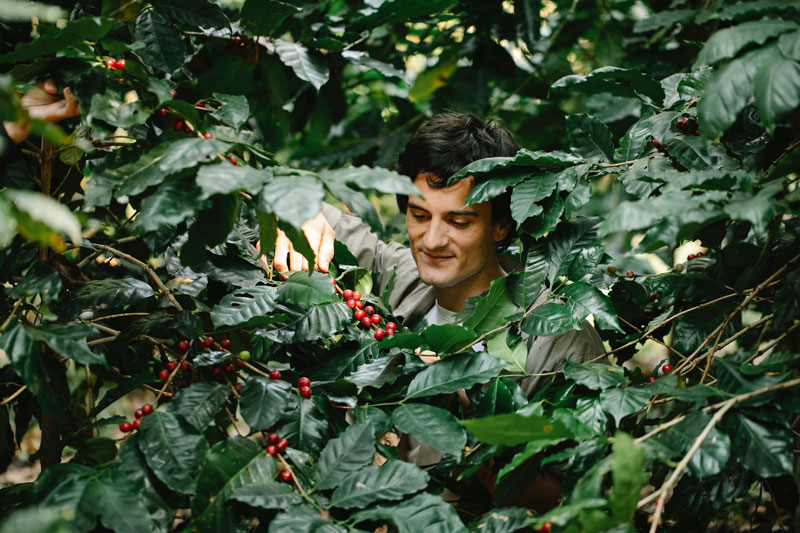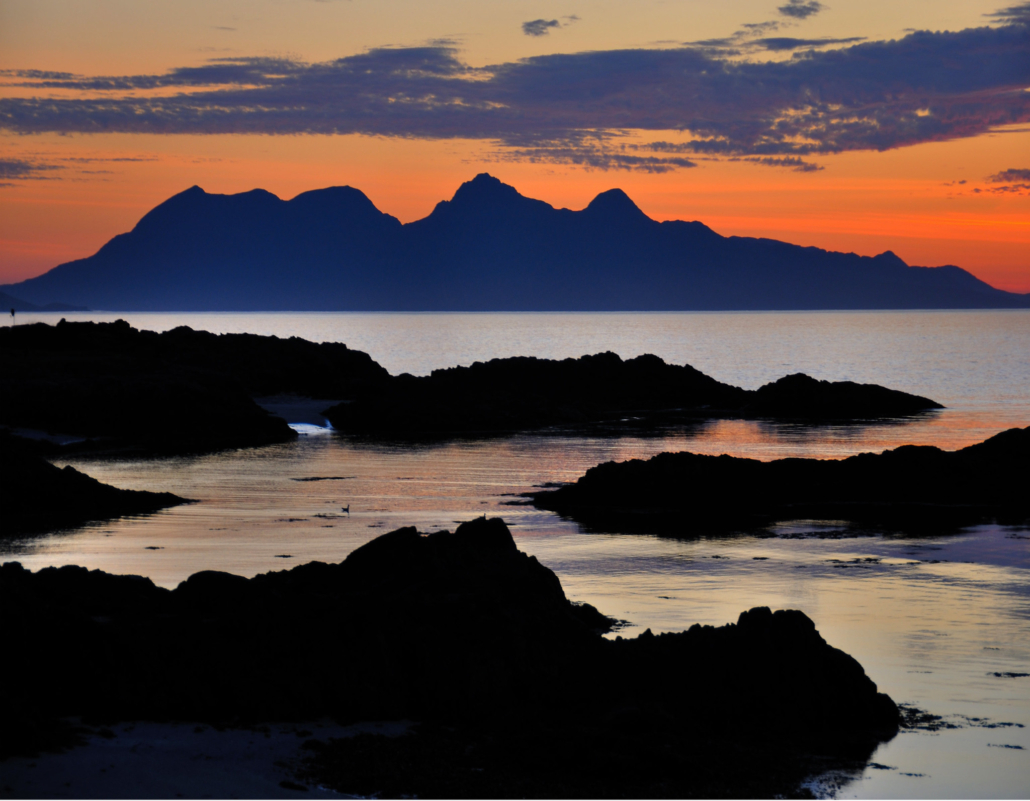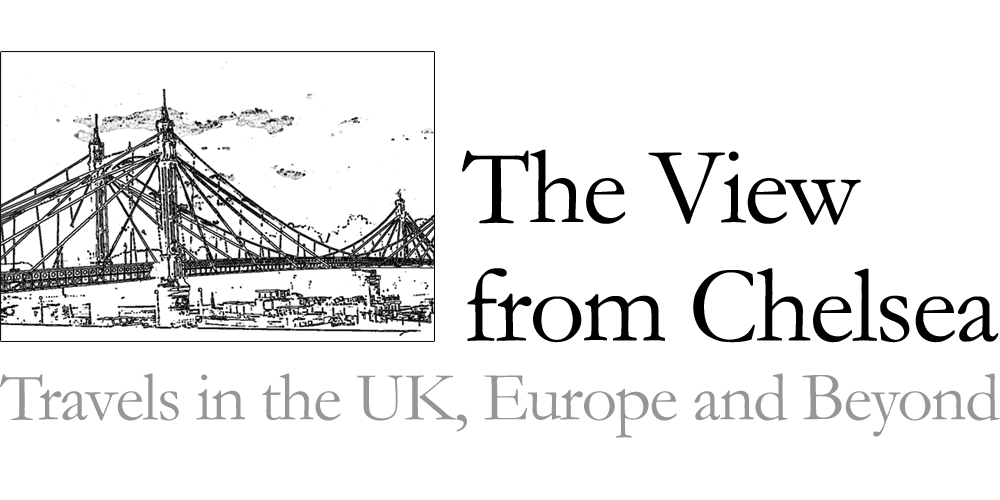The Ethical Travel Quandary
There was a time when planning for a getaway meant a pleasant amble through brochures and websites. These days, it’s more like launching yourself into a sustainability minefield. 
Sustainable reforestation in Nicaragua. Coffee, a cash crop, thrives in the shade of newly planted young trees. Photo by Michael Burrows
It’s that grim time of year when plummeting temperatures, wet weather and grey skies have most of us dreaming of sunshine and summer holidays. So many have put off travel since before the pandemic that now the desire to get away is almost irresistible.
There was a time when planning for a getaway meant a pleasant amble through brochures and websites. These days, it’s more like launching yourself into a sustainability minefield. If you haven’t factored the climate crisis into your vacation choices before, this year it is impossible to avoid it. As fuel prices soar the climate is changing. No one can ignore the floods, mega storms, forest fires and extreme weather in the news.
Are good intentions about sustainability enough?
Probably not. Choosing guilt-free, conservation-aware, socially conscious, sustainable holidays takes more than good intentions. Where do you begin? And with so much virtue signalling and greenwash around, how do you judge the sustainability of your choices?
A 2019 survey, reported in National Geographic Traveller in 2021, showed that while 42% of travellers were willing to support sustainable travel, “only 15% of them knew what sustainable travel actually meant.”
And the difficulty of defining it points up how hard it is for consumers to balance choices while aiming to be more ethical travellers.
- Efforts to limit travel to protect the planet can devastate areas economically dependent on vacationers.
- Policies that seem appropriate for sustainability may be inappropriate for local workers, driving them into more unsustainable activities and businesses or off their land altogether.
- Reduced opportunities for local workers can harm relatively low-impact local enterprises.
- Lower tax revenues from tourism can reduce already financially strapped governments from investing in parks, nature reserves, environmental cleanups and other eco-projects.
It’s easy to spiral down a rabbit hole of negativity when considering the impact of reduced travel to places where tourism may be the main (or only) source of employment. But it’s becoming clearer every day that ignoring the impact of our travel choices is no longer an option.
I can’t pretend to have any answers and my travel choices are just as fraught as anyone’s. So I decided to talk to some travel experts who are wrestling with these issues and trying to plot a course toward a zero carbon, low impact travel future – for both their businesses and their clients
Still planting trees?
This question is not as simplistic or silly as it may at first seem. Have you ever considered the difference between planting trees and growing trees? Me neither.
Tom Power, managing director and a founder of Pura Aventura (PA), a company that offers customisable travel adventures and experiences in Spain, Portugal, Latin America and Antarctica, asked me just this question. Power’s company was one of the first UK travel companies to become a certified B Corp (see panel below), a new form of audited corporate governance that puts the planet at the forefront.
So planting or growing? Anyone who has travelled for a while can remember when carbon offsetting was the big thing. Offsetting – which is still around but now often seen as a kind of greenwash – was essentially the ability of big companies to throw money at projects that ostensibly “offset” the carbon pollution they generated. And tree planting projects were among the most popular – and easy – ways to offset. After all, aren’t forests the “lungs” of the planet?
Some experts think that carbon offsets can be another problem instead of a solution. According to Xavier Font, professor of sustainability marketing at the University of Surrey (quoted in the National Geographic Traveller article cited above), “The moment you start telling people their carbon has been offset, they stop caring…They see it as a free pass.”
What is a B Corp?
A B Corp is a company that has achieved B Corp certification – an extensively assessed and audited international qualification. The standards B Corp certified companies must meet are measured on their total environmental and social impact. They face a 4,000-question test that examines their performance in the areas of environment, community, workers and corporate governance. The certification process aims at verified social and environmental performance, public transparency and legal accountability. At the completion of the process of qualifying for certification, B Corp companies make legal changes to their corporate governance structure to ensure that all their stakeholders, not just their shareholders, benefit from their activities. Currently, there are more than 6300 B Corps companies in 189 countries. Find out more about B Corp.
Sustainable travel or a mug’s game?
Power says paying people to plant trees is “a mug’s game,” if “nobody is being paid to look after them. Where are the trees from? What are they for?” He described a more sustainable model that PA is participating in (under the B Corp umbrella and supervised by Canadian NGO Taking Root). The project works with smallholding subsistence farmers in Nicaragua in what has been called the largest reforestation project in that country.
The project pays local women to collect seeds of native, fast-growing trees. Farmers get paid a competitive wage to turn 20 to 30 per cent of their land over to growing those trees and learning how to care for them. Eventually, the trees will become a sustainable and renewable cash crop. Meanwhile, the young trees provide a shaded environment for growing higher-value cash crops such as coffee and cacao. The project improves rural incomes, stabilises the soil and brings overseas funds into the local economy. Even without the carbon credit element, Powers called the Nicaraguan reforestation “a bloody great project.”
In what the Independent called “one of the travel industry’s most ambition carbon mitigation plans,” PA is committed to using 1 per cent of its revenue to contribute to such projects and “create a positive environmental legacy.”
Aiming big vs going small
PA calculates the carbon footprint of all its tours in kilometres and then compensates in carbon miles. So for every carbon kilometre a tour generates, the company seeks to mitigate 160 per cent of the carbon. This goes some way to compensate for travel costs outside PA’s control – notably the carbon miles generated by customers’ travel arrangements (i.e. flights) required for travelling to and from tour departure and endpoints. At year-end, the company determines its total carbon footprint and buys credits to retire through the Nicaraguan project.
But certification schemes, no matter how well-intentioned, are businesses with a significant portion of their funds supporting the administration of those businesses – even if they are non-profits. And formal certification tends to favour large-scale, sexy schemes – some of which, like the Nicaraguan reforestation project, are very cool.
Still walking in the dark
PA also aims to direct a large portion of its funding commitment to projects where as close to 100% of the funds go to local communities, small local businesses and workers. Because their guides and suppliers are on the ground in the destinations they take travellers to, the company looks for smaller, community-based projects, – a Galapagos conservation trust, a rewilding project in Chile, for example. But Power is quick to point out that this is an evolving curve. “We are constantly changing our activities in the light of best practice, moving away from spending on offsets and chucking funds into best science. We’re not walking in pitch black but it’s also not a brightly lit landscape.”
Three pillars of sustainability
Wilderness Scotland is an adventure travel company that offers travellers adventure holidays in some of the most remote corners of Scotland and Ireland. Paul Easto, the company founder and chief executive officer says sustainable initiatives are built on three pillars – climate, conservation and community. When planning new tours and making business decisions, activities and choices, he said, must be tied to at least one – and preferably all three of these.
If that sounds suspiciously like one of those corporate mission statements that consultants flogged in the 1980s, Easto is quick to point out that the nature of his company’s tours – walking, cycling, hiking and climbing – grounded in the natural world, ultimately delivers sustainable benefits. “Our view,” he said, is that such purpose-driven and selective travel ultimately delivers net benefits to our planet, providing invaluable support to economies, communities and environments around the world.”
Although Wilderness Scotland (WS)does invest in some carbon offset, Easto believes, overall, offsets are a distraction. “Everyone should be focused on carbon reduction and we don’t want that message to be confused.”
To that end, Easto says, “We are always looking for innovative solutions to environmental challenges.” WS partners with organizations such as the John Muir Trust on a number of smaller projects. For example, they sponsored Scotland’s first SeaBin, a system that removes marine waste from harbours.
At the moment WS’s main carbon mitigation activity is reforestation in Scotland. But Easto explained they are looking to invest in carbon capture technology in the UK. “Over the next decade, we are blending our approach (between carbon capture through reforestation and more advanced technologies) so that the only thing we will invest in is carbon removal.”
Community involvement
More than 95 per cent of WS’s expenses, for accommodations, supplies and guides, stay in the local economies “because we are exclusively working with local suppliers. That is very important to the socio-economic health of the areas in which we work. We have to believe that buying local makes a positive contribution.” Another contribution will be improvements in gender and ethnic diversity. “Companies working in the outdoor adventure space don’t do a good job in working with and attracting people from a variety of ethnic background. Compared to community based tourism around the world, the UK has a lot of catching up to do.”

On Scotland’s Isle of Rum, a sustainable project is a lodge owned and run by the small local community to accommodate adventure travellers.
And lastly, WS is working with a few small island communities to integrate the local community into the experiences they offer. On the island of Rum, the largest of Scotland’s ”Small Isles”, WS is working with a new accommodation lodge owned by the community.
The company will offer week-long stays for Wilderness Scotland tourists. Rum has been a National Nature Reserve since 1957 and, while there on guided walking tours, WS clients participate in conservation projects with local rangers – beach clean-ups and wildlife counts, for example.
Who should address the sustainability challenge?
Despite these kinds of efforts, the elephant in the room remains the element of travel beyond most tour operators’ control – aviation. Easto reports that 70 per cent of his company’s clients are international – the majority from North America. “They are a very important part of our business. They stay longer and do different things.” But they also require long-haul flights which, experts report, account for 80% of a holiday’s carbon footprint. WS, like other operators, labels the carbon cost of its holidays but those labels only apply to the land-based elements of the tours.
“There are unavoidable impacts with longer-haul travel,” Easto admits. The company works with a travel booking partner and puts the commissions it earns into carbon offsets. They also solicit optional contributions for their community and conservation charities from their customers, with 100 per cent of the funds collected going directly to the charities. Customers are given the opportunity of opting out, rather than in, to a small amount added to the cost of their trip. About 80 per cent agree to pay the additional amount – around 10 Euros.
Until aviation emissions are radically controlled, the idea of Zero Carbon vacations to long-haul destinations seems like a pipe dream.
No easy answers
These are just two examples of the issues facing tour operators right now and the steps they are taking. Perhaps, I’ve also managed to highlight some of the questions you, as a consumer of travel, should be asking. But there is a long way to go. With aviation producing 2 per cent of worldwide CO2 emissions and accounting for 80 per cent of holiday carbon footprints, holiday suppliers are having to run as fast as they can to try to stay in place. Until aviation emissions are radically controlled, the idea of Zero Carbon vacations to long-haul destinations seems like a pipe dream. And expecting small-scale travel suppliers to solve the problem is like expecting consumers to solve global warming by remembering to turn off the bathroom lights.
You may also like:
Book Review: Crossed Off the Map – Travels in Bolivia


 Patrick Bauduin via Flickr
Patrick Bauduin via Flickr Ferne Arfin 2023
Ferne Arfin 2023
Trackbacks & Pingbacks
[…] Is sustainable travel really possible? […]
Leave a Comment
What do you think?Please add your comments and suggestions here.